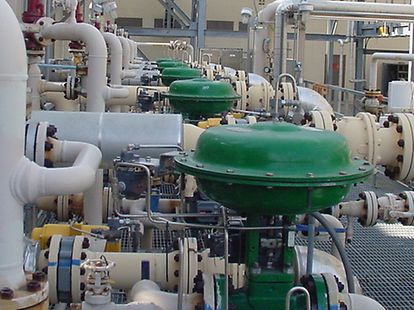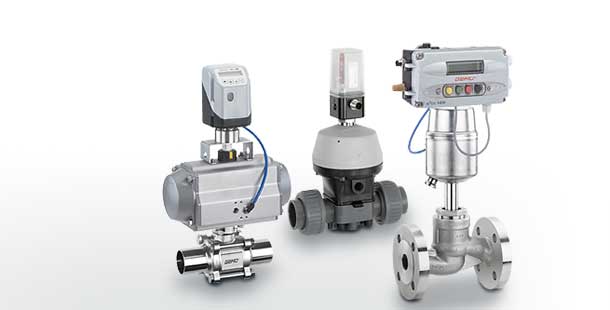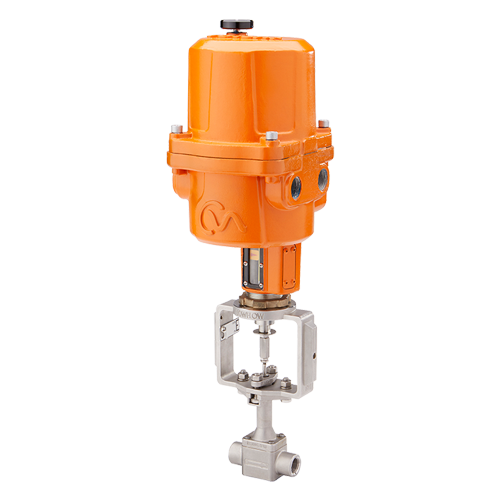Picking the Right Control Valves: An Overview to Optimal System Performance
Picking the Right Control Valves: An Overview to Optimal System Performance
Blog Article

Maximize Power Cost Savings and Comfort With Advanced Building Automation Controls
In the realm of modern architecture and center administration, the assimilation of innovative building automation controls stands as a pivotal advancement. The merging of innovation and sustainability has birthed a brand-new era where power effectiveness, comfort optimization, and functional streamlining are no longer achievable facts however distant desires. By taking advantage of the power of automation, buildings can adjust, react, and progress in manner ins which were when unthinkable. The possibility for substantial energy cost savings and improved comfort is not simply an assurance however an opportunity waiting to be satisfied. This paradigm change in structure management holds the vital to opening a world where ecological conscientiousness and passenger well-being sympathetically exist side-by-side within the walls of our frameworks.
Energy Efficiency Perks
Energy effectiveness advantages can significantly reduce energy intake and operational costs in buildings. Energy-efficient systems, such as sophisticated structure automation controls, can enhance the usage of sources like heating, air conditioning, and lights, leading to reduced energy expenses over time.
Moreover, enhanced power effectiveness can extend the life expectancy of building devices and systems. By operating much more effectively, cooling and heating systems, light, and other building components experience much less damage, causing lowered upkeep and replacement costs. In addition, energy-efficient buildings often regulate greater residential or commercial property worths and rental rates, supplying long-term economic benefits to proprietors.
Furthermore, power efficiency can enhance passenger comfort and performance. Appropriately regulated interior atmospheres with optimal lighting and thermal problems produce a more pleasant and helpful office, bring about boosted staff member contentment and efficiency. Overall, the energy performance benefits connected with advanced structure automation controls are multifaceted, including expense financial savings, environmental stewardship, and owner wellness.
Enhanced Comfort Control
Enhancing comfort control in building settings calls for an innovative combination of sophisticated automation systems for ideal resident wellness. By utilizing sophisticated structure automation controls, centers can tailor the indoor atmosphere to satisfy the certain demands and choices of passengers. control valves.
By incorporating these advanced controls, structures can not just boost convenience but also boost power effectiveness by enhancing system operations based on actual tenancy and use patterns. Ultimately, prioritizing owner comfort with innovative automation systems leads to a more delightful and healthier indoor atmosphere.
Operational Effectiveness Improvements

Moreover, the application of real-time surveillance and analytics tools allows building drivers to recognize energy inadequacies and functional anomalies immediately. By continually keeping an eye on power usage patterns and system performance metrics, modifications can be made in real-time to maximize energy intake and make certain peak operational effectiveness. control valves. view website Additionally, integrating need feedback techniques right into building automation controls can even more boost operational effectiveness by dynamically readjusting energy usage based upon grid conditions and prices signals
Indoor Environment Optimization
Efficient interior climate optimization is a basic element of structure automation controls, making certain residents' convenience and well-being while making the most of power financial savings. By utilizing sophisticated sensing units and controls, constructing automation systems can continually keep an eye on and change temperature, humidity levels, air quality, and ventilation to develop an optimum interior atmosphere. Preserving comfy and regular problems not only enhances occupant complete satisfaction however also increases productivity and overall health.
Interior climate optimization also plays an essential role in power performance. By fine-tuning ventilation, heating, and air conditioning systems based on real-time information and tenancy patterns, building automation controls can significantly lower energy consumption - control valves. Applying strategies such as demand-controlled air flow and thermal zoning can help decrease energy waste while making certain that each location of the building obtains the required conditioning.

Sustainable Atmosphere Creation
Building automation regulates not just enhance indoor climate conditions for power performance and passenger convenience however also lay the foundation for creating a lasting setting via critical management of resources and systems. By incorporating sophisticated building automation technologies, such as sensors, actuators, and smart software program, centers can adjust and monitor power usage in real-time to minimize waste and minimize their carbon footprint. These systems make it possible for predictive maintenance, recognizing potential concerns before they escalate and enhancing equipment efficiency to improve longevity and effectiveness.
Furthermore, lasting atmosphere creation expands beyond power administration to encompass water preservation, waste reduction, and interior air high quality improvement. Building automation controls can manage water usage, find leaks, and ensure correct waste disposal practices, adding to general sustainability initiatives. Furthermore, by keeping an eye on and controlling ventilation and purification systems, these innovations enhance owner health and wellness and productivity while lowering power consumption connected with heating and cooling procedures.
Conclusion
To conclude, advanced building automation manages deal significant benefits in regards to power financial savings, comfort control, operational effectiveness, interior environment optimization, and developing a sustainable atmosphere. By carrying out these controls, structures can attain optimal performance while minimizing power intake and improving resident comfort. It appears visit that the usage of innovative automation technology is vital in boosting structure efficiency and creating a much more lasting future.
Power performance advantages can significantly decrease energy usage and functional prices in structures. On the whole, the power performance benefits associated with innovative structure automation controls are diverse, including expense savings, environmental stewardship, and occupant well-being.
In addition, including demand response strategies right into building automation controls can even more enhance functional effectiveness by dynamically their website adjusting power usage based on grid conditions and rates signals.
Building automation controls not just enhance interior environment conditions for power effectiveness and occupant convenience yet likewise lay the foundation for creating a lasting atmosphere through strategic monitoring of sources and systems.In verdict, advanced building automation controls deal considerable benefits in terms of energy financial savings, convenience control, functional effectiveness, indoor environment optimization, and creating a sustainable environment.
Report this page